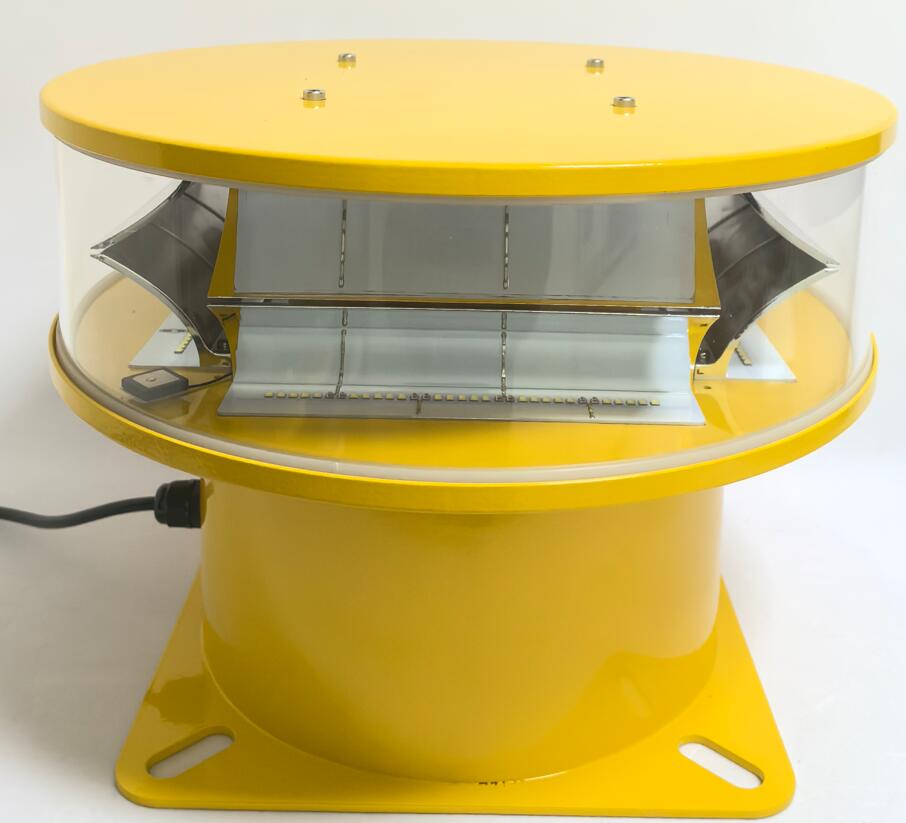Enhancing Aviation Safety: The Critical Role of Aircraft Obstruction Lights
Aircraft obstruction lights are essential safety devices designed to prevent collisions between aircraft and tall structures such as towers, wind turbines, and skyscrapers. These lights serve as visual warnings, ensuring that pilots can identify potential hazards, especially during low-visibility conditions. As air traffic continues to grow and urban structures reach unprecedented heights, the importance of reliable and compliant obstruction lighting systems cannot be overstated.
This article explores the key aspects of aircraft obstruction lights, including their types, regulatory standards, technological advancements, and best practices for installation and maintenance.
Types of Aircraft Obstruction Lights
Aircraft obstruction lights are categorized based on their intensity, color, and flash patterns. The primary types include:
1. Low-Intensity Obstruction Lights (L-810)
Used for structures below 45 meters (148 feet).
Emit steady red light.
Typically installed on buildings, telecommunication masts, and power lines.
2. Medium-Intensity Obstruction Lights (L-864 & L-865)
Suitable for structures between 45 and 150 meters (148–492 feet).
Type L-864: Steady red lights.
Type L-865: White flashing lights (daytime use) and red steady lights (nighttime use).

3. High-Intensity Obstruction Lights (L-856 & L-857)
Required for structures exceeding 150 meters (492 feet).
Type L-856: High-intensity white flashing lights (daytime and twilight).
Type L-857: Dual lighting system (white flashes by day, red steady lights at night).
Regulatory Standards and Compliance
To ensure uniformity and safety, aviation authorities worldwide have established strict guidelines for aircraft obstruction lights. Key regulatory bodies include:
Federal Aviation Administration (FAA) – AC 70/7460-1L
International Civil Aviation Organization (ICAO) – Annex 14
European Aviation Safety Agency (EASA) – CS-ADR-DSN
| aircraft obstruction lights |
These standards define light intensity, flash rates, beam divergence, and placement to maximize visibility for pilots. Compliance is mandatory for all structures posing an aviation hazard.
Technological Advancements in Obstruction Lighting
Modern aircraft obstruction lights incorporate cutting-edge technologies to enhance reliability and efficiency:
1. LED-Based Lighting
Energy-efficient and long-lasting compared to traditional incandescent bulbs.
| aircraft obstruction light |
Improved visibility with high luminous intensity.
Reduced maintenance costs due to extended lifespan.
2. Solar-Powered Systems
Ideal for remote locations without grid access.
Environmentally friendly with minimal carbon footprint.
Equipped with battery backup for uninterrupted operation.
3. Smart Monitoring & Remote Control
IoT-enabled systems allow real-time status monitoring.
Automated fault detection and alerts for maintenance teams.
Adjustable brightness based on ambient light conditions.
Best Practices for Installation and Maintenance
Proper installation and upkeep of aircraft obstruction lights are crucial for sustained performance. Key considerations include:
1. Optimal Placement
Lights must be positioned at the highest points of the structure.
Spacing should follow regulatory guidelines to ensure full coverage.
2. Weather Resistance
Lights should be rated for extreme temperatures, wind, and precipitation.
Corrosion-resistant materials (e.g., aluminum or stainless steel) are recommended.
3. Routine Inspections
Regular checks for damaged lenses, burnt-out bulbs, or electrical faults.
Cleaning of lenses to prevent dirt accumulation that may reduce visibility.
4. Backup Power Systems
Uninterruptible power supply (UPS) or generators to prevent light failure during outages.
Aircraft obstruction lights play a vital role in safeguarding air travel by preventing collisions with tall structures. With advancements in LED and smart monitoring technologies, these systems are becoming more efficient and reliable than ever. Adherence to regulatory standards and proper maintenance ensures continuous protection for both aircraft and infrastructure.
As urbanization and air traffic continue to rise, investing in high-quality obstruction lighting is not just a regulatory requirement—it’s a commitment to aviation safety. By integrating modern solutions and following best practices, stakeholders can contribute to a safer and more efficient airspace for all.
